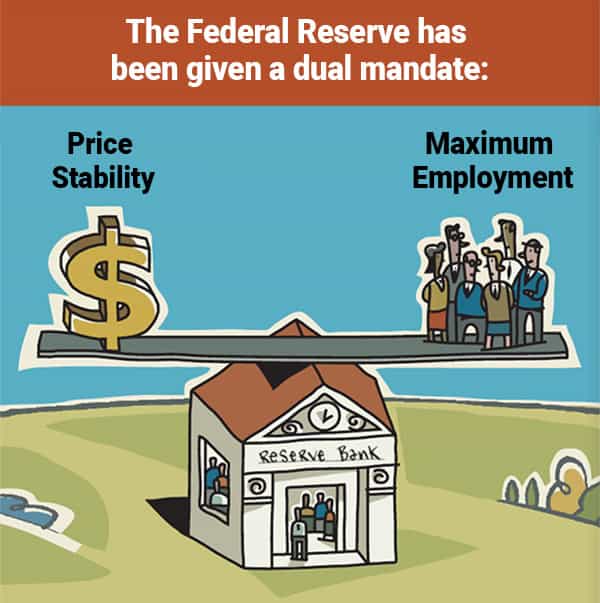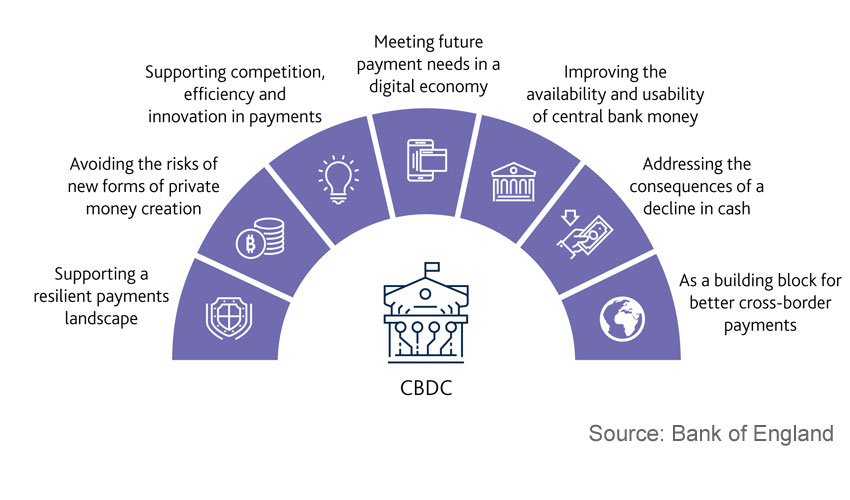Imagine you’re on a ship in the middle of a storm. In the same way, our economy often faces rough seas and looming threats. Who’s at the helm during these moments? The central bank role in economy stands out as the captain, navigating treacherous waters to ensure our economic safety and progress. In this post, I’ll reveal how the central bank’s actions are vital in steering us through the ebbs and flows of financial tides, from battling inflation to setting the rhythm of interest rates. Buckle up, and let’s dive deep into the pivotal role central banks play in keeping our economic ship on course.
Understanding the Central Bank’s Mandate in Economic Management
The Role of Monetary Policy in Shaping the Economy
Monetary policy is like a captain’s wheel for the economy. It guides us through rough and calm seas. A central bank uses tools to keep things stable. Interest rate decisions are huge. They make borrowing cheap or costly.
Imagine wanting to start a business. If interest rates are low, you can borrow money easily. You get to hire folks and grow your business. More people with jobs mean the economy does well.
But there’s a catch. If everyone spends a lot, prices begin to rise. That’s inflation. Central banks hate too much inflation. When prices shoot up, they up the interest rates. They try to slow down spending so that prices don’t keep jumping.
Analyzing the Implications of Central Bank Decisions
Every time the central bank makes a move, it has big ripple effects. Lower interest rates can mean more jobs and business growth. But if rates dip too low for too long, people might start buying too much, too fast. Prices for toys, food, and clothes might go up.
When the central bank twiddles with interest rates, they’re thinking about jobs and prices. They want people working and buying things. But not so fast that prices go wild. It’s a tight rope walk, for sure.
Quantitative easing is another tool. It’s a fancy way of saying the bank makes more money available. They buy government bonds and stuff, pumping cash into banks. The hope here is that banks lend more out to people like you and me.
Open market operations are super smart moves. The central bank buys or sells government securities. It can sneak money into the economy or pull some out. It’s all about keeping that cash flow just right.
But central banks have to keep their eyes on more than just home. They have to look at stuff like how strong or weak our money is compared to others. They call that the currency stability. If our cash is weak, stuff from other countries costs more. That can mess with prices too.
They try to grow the economy but also want a safe and sound banking system. Too many risky loans and we could have trouble. That’s when they might up reserve requirements – basically, banks have to hold more cash. It makes them safer but means they can’t lend out as much.
Now, all this stuff central banks do is important. When they adjust rates or throw out lifelines, they aim to keep our money safe. They look at loads of things: how much stuff costs, if people have jobs, and whether banks are playing it safe. It’s a huge job. But when done right, it can make our economy hum along nicely, and that’s good for all of us.
Navigating Through the Currents of Inflation and Interest Rates
Strategies for Inflation Control and Price Stability
Inflation makes life hard to afford. So, central banks fight this. They work to keep prices stable. This means you pay about the same over time for bread, milk, and gas. For stability, they aim at a set inflation rate.
Central banks use tools for this job: one is hiking up the policy interest rate. When rates go up, borrowing money gets pricier. People and businesses then spend less. Buying slows and prices stop climbing too fast.
Another tool is the cash reserve ratio. This is how much money banks must keep. When banks hold more cash, they lend less. Less money out there means slower inflation.
The central bank also buys and sells stuff, like government bonds. This is called open market operations. Buying adds money into the economy. Selling pulls money out. This way, they balance how much cash is floating around.
The Dynamics of Setting Policy Interest Rates
Setting the right policy interest rate is a big deal. It’s like setting the pace in a long run. Go too fast and you might tire out, go too slow and you won’t finish in time.
When the central bank thinks prices will rise too fast, they push rates up. Like tapping the brakes on a car that’s speeding. They look at a lot of things to decide this. They study how much stuff costs now and guess how much it will cost later.
They also keep an eye on our jobs and if we can find work. Fewer jobs can mean rates stay low to help us out. If lots of us have jobs, they might raise rates a bit.
For keeping money stable, they also check on other countries’ money. They want our money’s buying power strong compared to theirs.
Setting these rates is tricky. It’s like solving a puzzle with many pieces. The central bank keeps tweaking, little by little. Their aim is a smooth ride for everyone, with jobs for us and stable prices for what we buy.
Low rates mean you can borrow cheap. This is great for buying homes or growing a business. High rates mean it costs more to borrow. This might sound bad, but it’s for a good cause: to keep prices from jumping too high.
Predicting and controlling inflation isn’t easy. Imagine trying to steer a boat in a storm. The central bank does its best so we can plan for tomorrow. They want us not to worry much about next year’s prices.
They’re the captains steering our economic ship. We trust them to keep a careful watch. To steer us clear of the wild waves and strong currents. They aim for calm seas, so our lives and money stay steady.
Tools at the Central Bank’s Disposal for Economic Stability
The Use of Quantitative Easing and Open Market Operations
Let’s dive right in with a big tool in the central bank’s kit: quantitative easing. What is it? Think of it as a big-money boost. The central bank makes new money to buy stuff like government bonds. This pumps cash into the economy, helping banks lend more and businesses grow.
And what about open market operations? It’s like fine-tuning a car but for the economy. The central bank either buys or sells government bonds. This changes how much money banks have to lend out. Buying bonds adds cash to the banks, and selling them takes cash away.
So, how do these help during bad economic times? When things get rough, like when jobs are few or prices shoot up, the central bank can step in. It uses these tools to adjust the money flow, hoping to make things stable again. This way, people can keep working, and prices don’t go crazy.
Reserve Requirements and Their Impact on the Banking System
Now, let’s talk about reserve requirements. This is the slice of money that banks must keep and not lend out. It’s like keeping a part of your allowance in your piggy bank, just in case. When the central bank changes this slice, it’s a big deal for banks.
If the central bank lowers the reserve slice, banks smile. They can lend more money to you and me. This can help folks buy things and start businesses, spurring the economy.
But if the central bank ups the reserve slice, banks might frown. They have less to lend, so it’s harder for people to borrow for homes or businesses. This can slow down the economy.
Remember, the central bank aims to keep the economy sailing smoothly. Whether it’s using quantitative easing, tweaking open market operations, or changing reserve bits, it’s all to keep us from economic storms. It tries to balance credit so we can all afford to live, work, and grow. It’s a tricky job, but when done right, it keeps the economy ship afloat.
The Central Bank’s Responsibility Towards Financial System Health
Acting as Lender of Last Resort and Supervising Banking Operations
Banks are like the engines of our economy. They loan out money to people and businesses. When banks face trouble, they can run low on cash. That’s when the central bank steps in. It’s called the lender of last resort. This means it gives emergency loans to banks that are stuck. It helps stop a big panic where everyone tries to get their cash back at the same time.
When banks get these loans, they can keep doing their job. They give loans to people for homes and cars. They help businesses grow and create new jobs. The central bank watches over these banks too. It makes sure they’re safe and sound. This way, customers’ money is protected.
Now, let’s talk about how they watch the money traffic. They set rules for banks, like the cash reserve ratio. Think of it as a safety net. Banks must keep some of our deposits in reserve. So, there is always enough cash for people who need it.
Measures to Ensure Liquidity and Stability in Government Bond Markets
How do banks get money to loan? One way is by selling government bonds. These are promises to pay back money with a bit on top, like interest. Often, these are safe bets for people to put their money. When you hear “buying and selling government bonds,” think of it as a big crowd of folks lending money to the government.
The central bank makes sure this market is not stormy. It uses open market operations, which is a fancy term. It means buying and selling those bonds to control how much money is out there.
When there’s too much money, prices can jump up, which is inflation. When there’s too little, we can tip into deflation. That’s when prices go down, and it sounds good but it can mean less work for people. The central bank aims for a sweet spot: not too high, not too low. This helps everyone who buys and sells stuff.
These tools—acting as lender of last resort, supervising banks, and making the government bond market smooth—are vital. They keep our economy running well. They help us trust our money is safe. And they make sure our country keeps growing, no matter the rough seas we might face.
We’ve done a deep dive into the central bank’s role in guiding our economy. We looked at how money policy shapes everything. We also saw how key decisions can ripple through markets. We’ve explored how to fight inflation and why interest rates move.
Then, we saw the big tools the bank uses to keep our economy steady. Things like buying and selling assets, or changing bank rules to make sure there’s enough money out there. We wrapped up by checking in on the central bank’s big job to keep our financial system safe and sound.
To sum it up, the central bank has a huge job. It’s all about using the right tools at the right time to keep our money’s value steady and our banks in check. Knowing this helps us understand the news and make smart money moves. Stay sharp out there – your wallet will thank you!
Q&A :
What is the primary function of a central bank in an economy?
The central bank plays an instrumental role in an economy by managing the nation’s monetary policy, issuing currency, and regulating the money supply. It often acts as a regulator for the nation’s banks and works to maintain low inflation and stable financial markets.
How does the central bank influence interest rates?
Central banks influence interest rates through their monetary policy actions. By adjusting the discount rate, which is the interest rate at which financial institutions borrow funds from the central bank’s lending facility, they impact the cost of borrowing, savings rates, and overall economic activity.
Can central banks stimulate economic growth?
Yes, central banks can stimulate economic growth by lowering interest rates, making borrowing cheaper for businesses and individuals. This often encourages investment and consumption, leading to increased demand and economic expansion. Conversely, central banks can cool down an overheated economy by raising interest rates.
What role does the central bank play during a financial crisis?
During a financial crisis, a central bank can provide liquidity to the banking system, lower interest rates, and purchase government securities in open market operations to stabilize the economy. It may also function as the lender of last resort to solvent banks facing short-term liquidity issues.
How do central banks fight inflation?
Central banks fight inflation primarily by increasing the cost of borrowing through raising interest rates. This typically reduces spending and borrowing, slowing down the economy, and decreasing inflationary pressures.EditingStyle tools like quantitative tightening, where the supply of money is reduced, are also employed.



